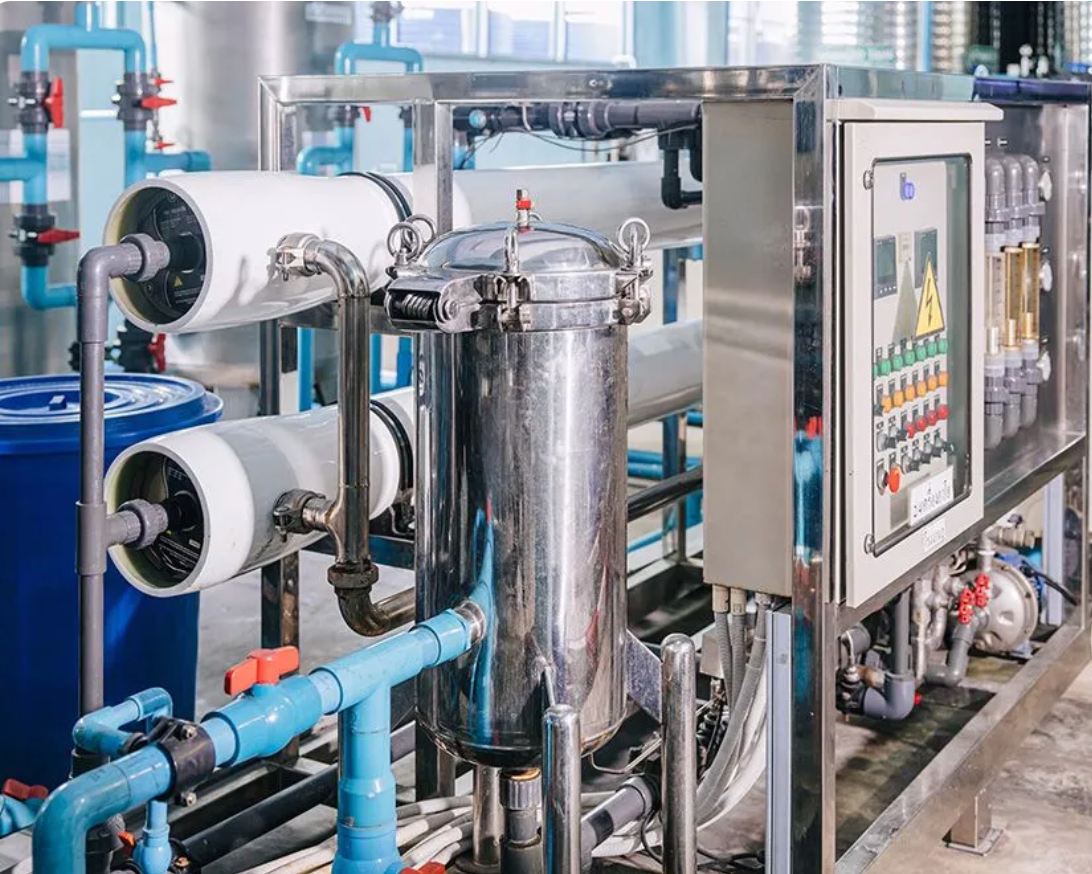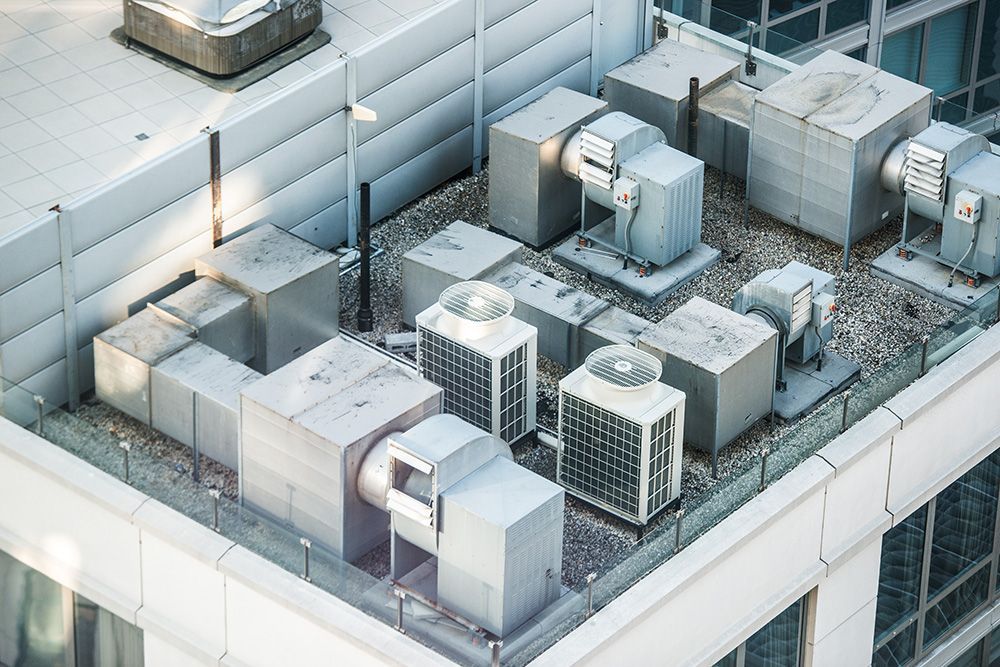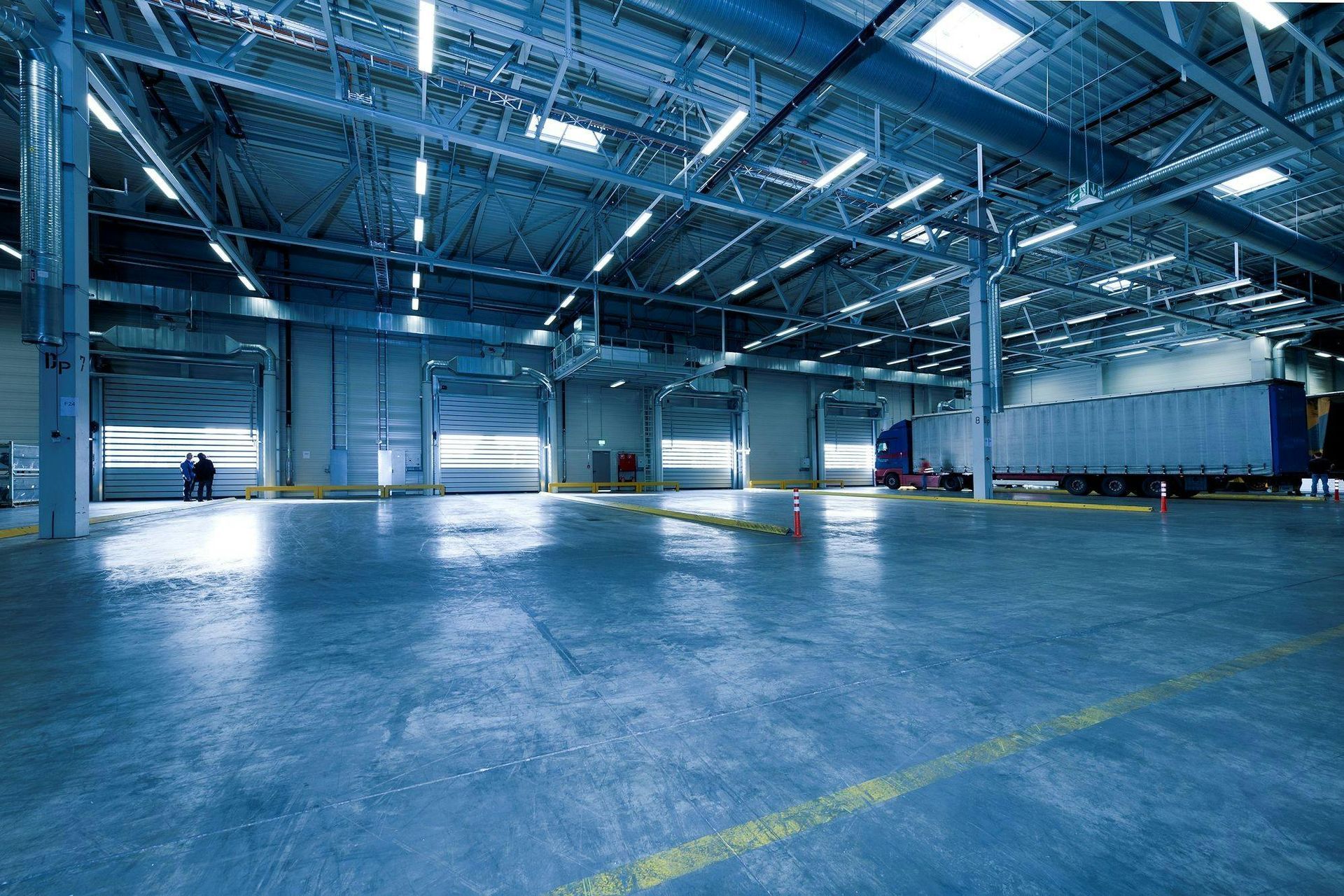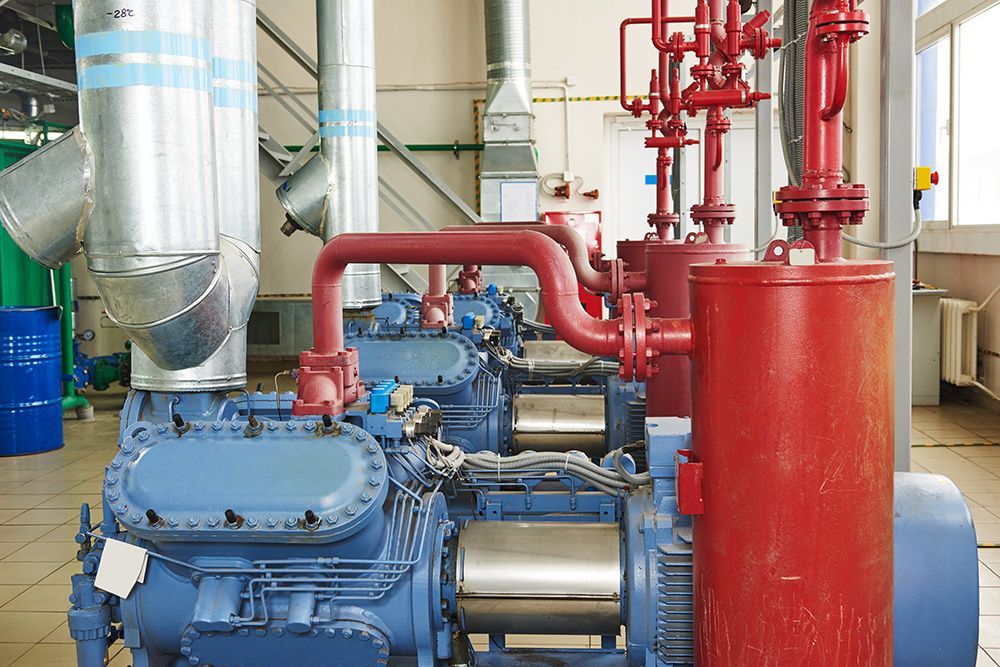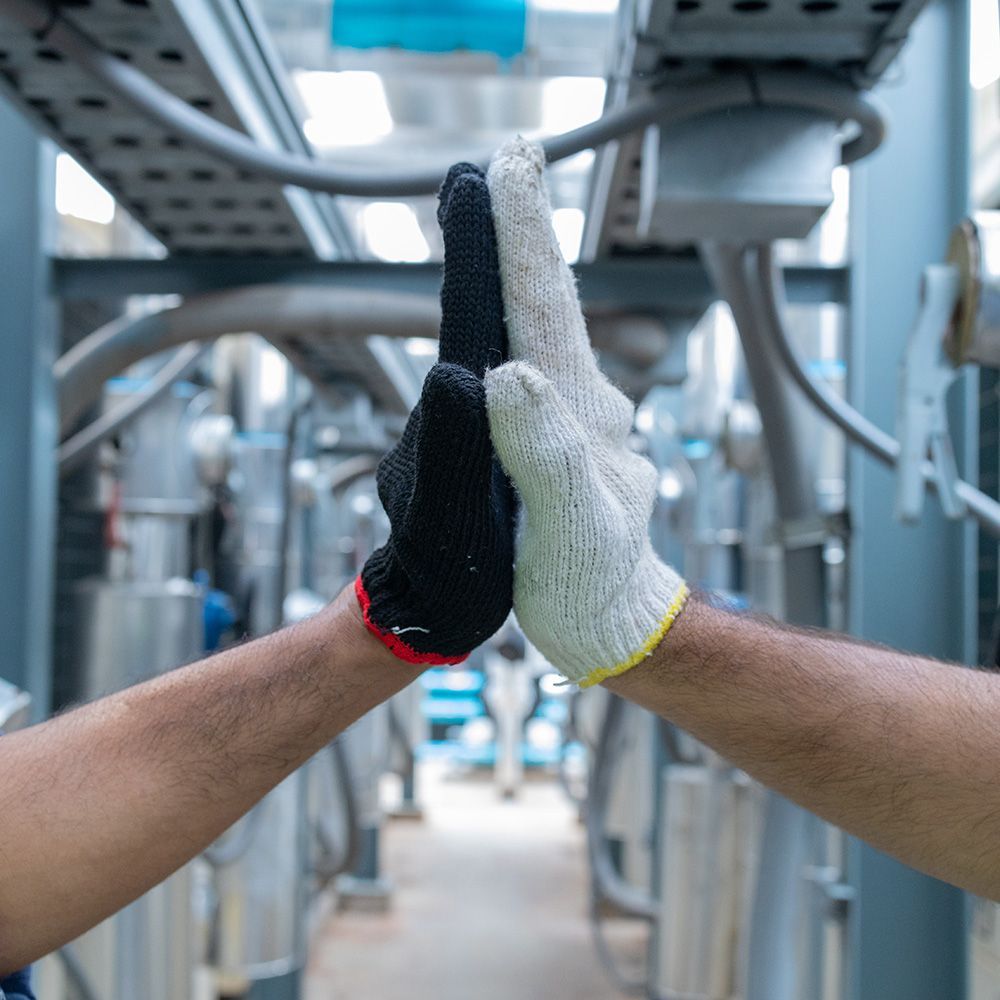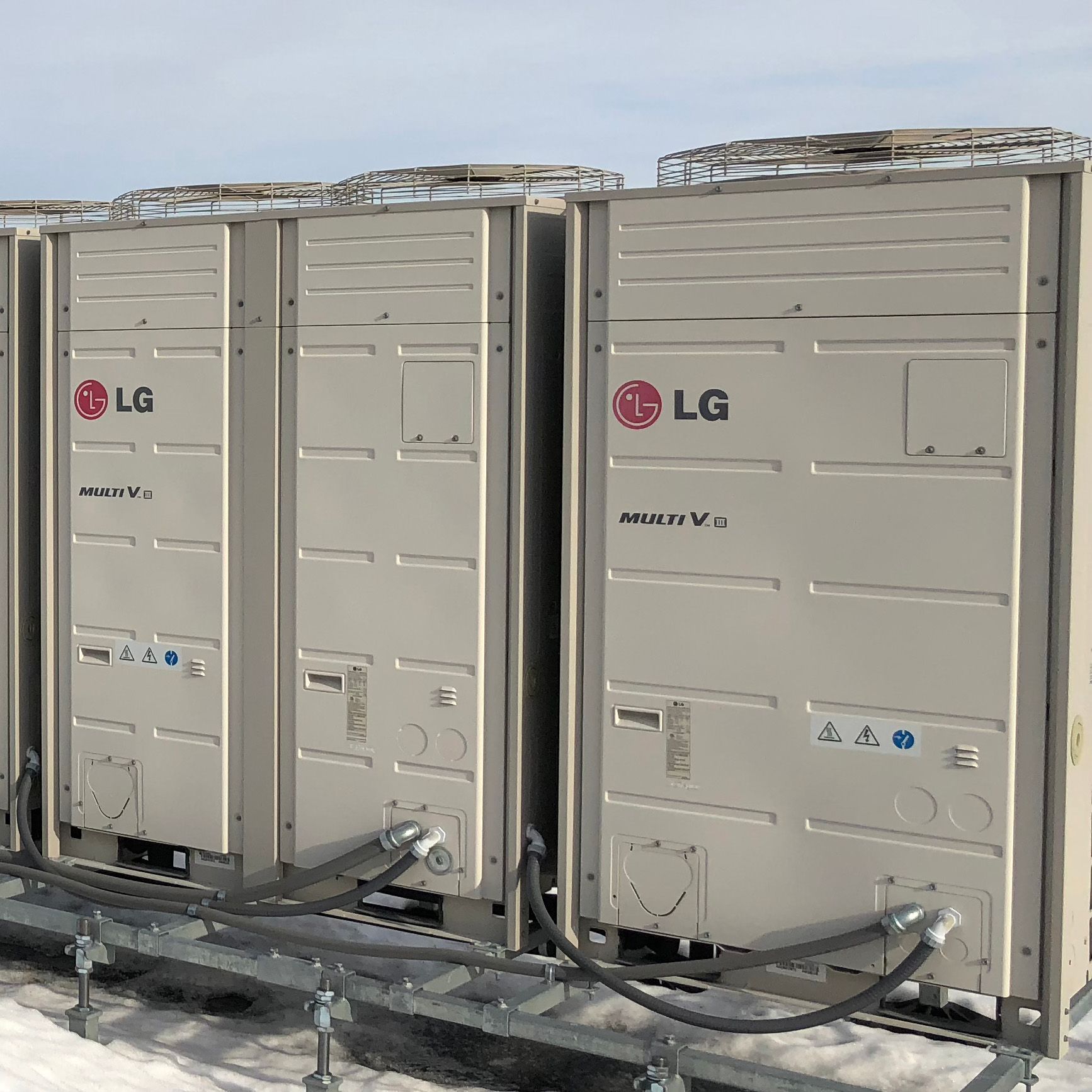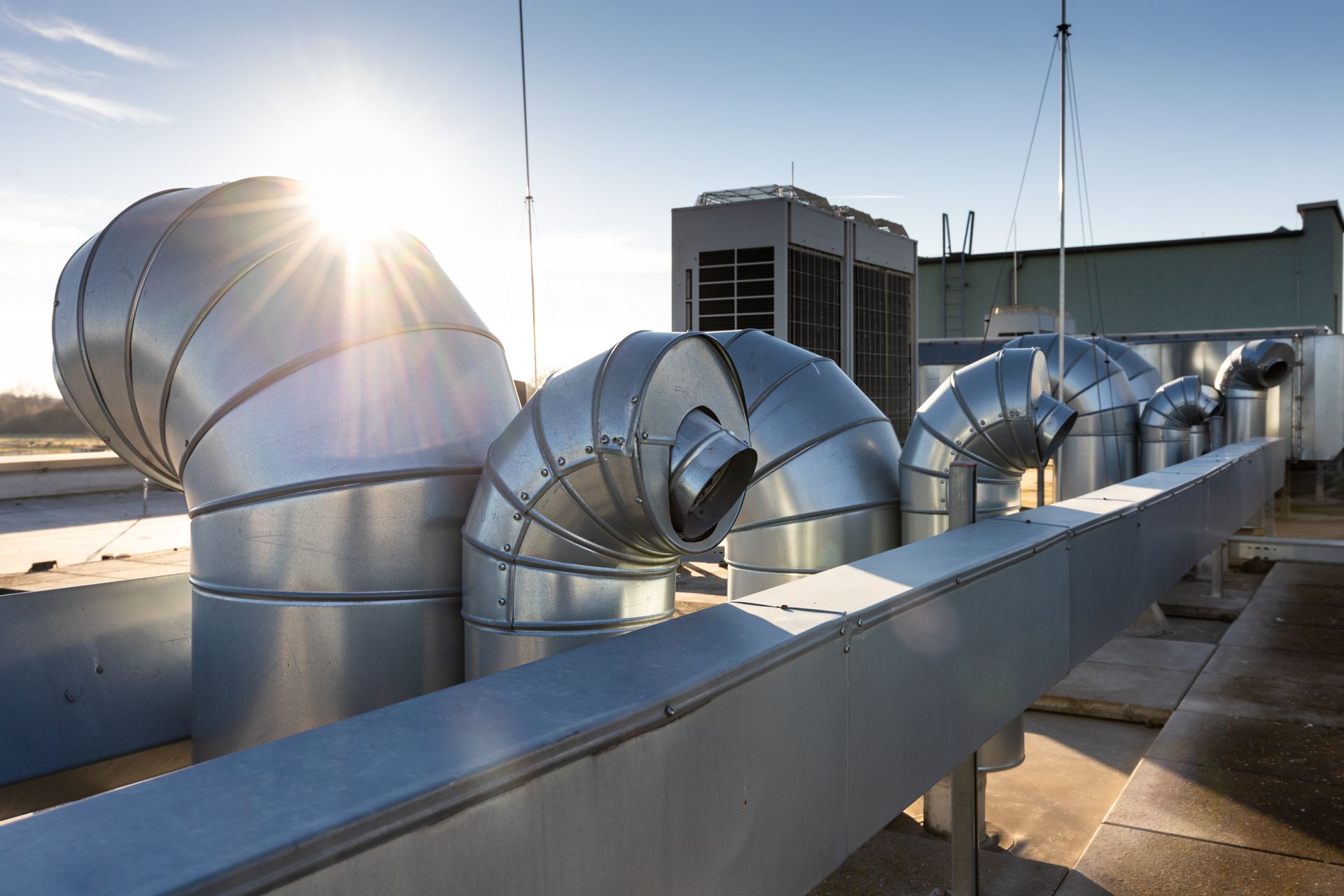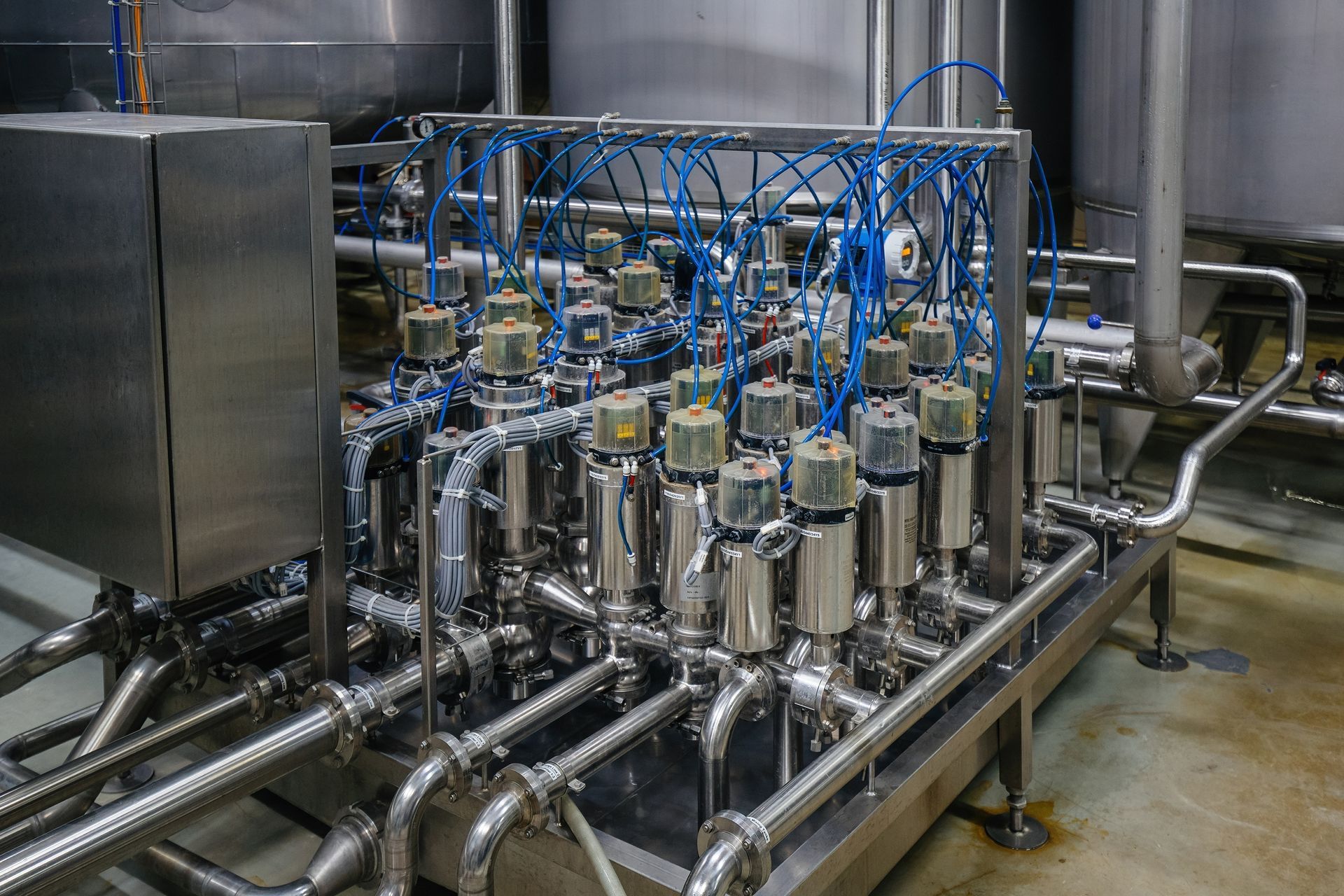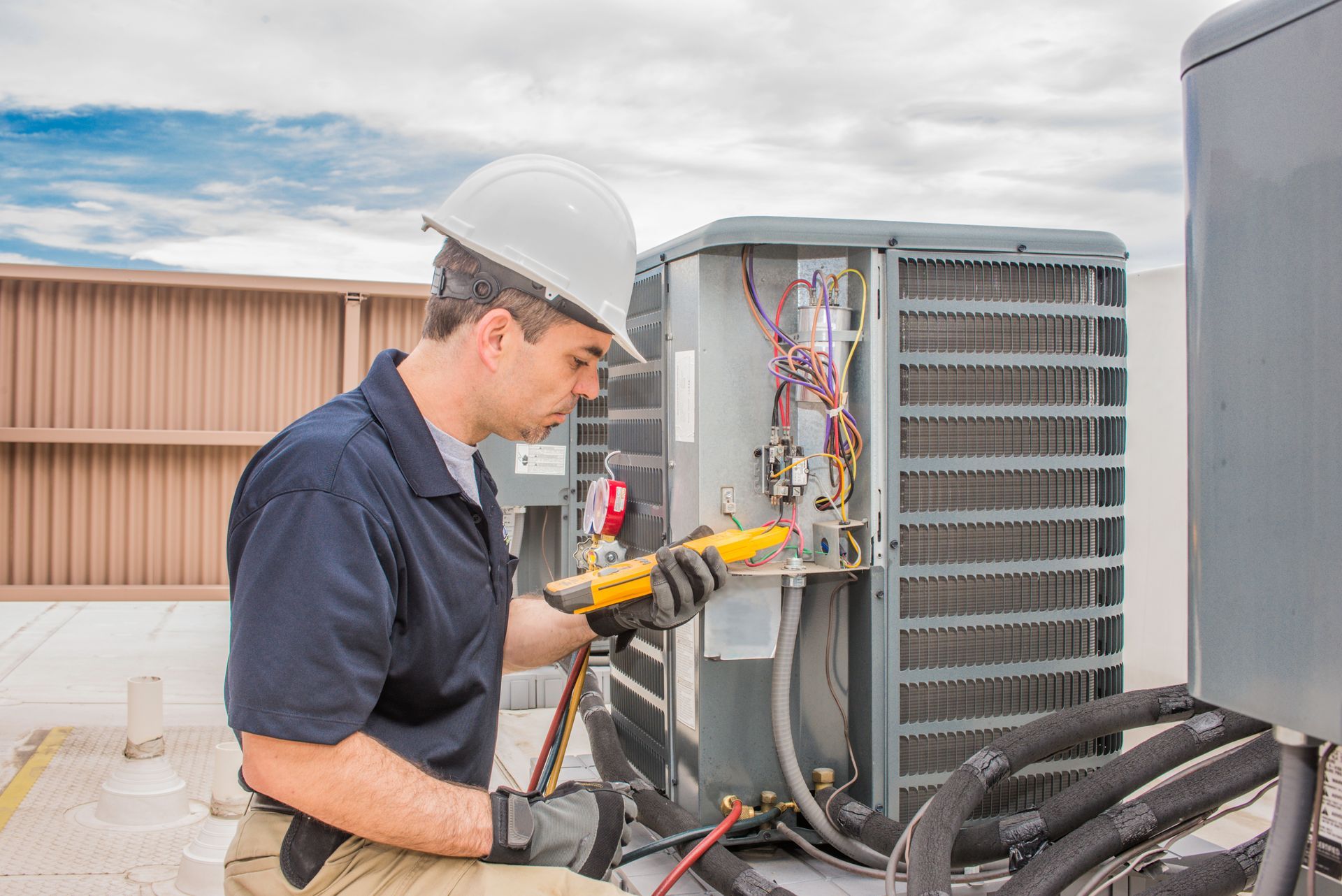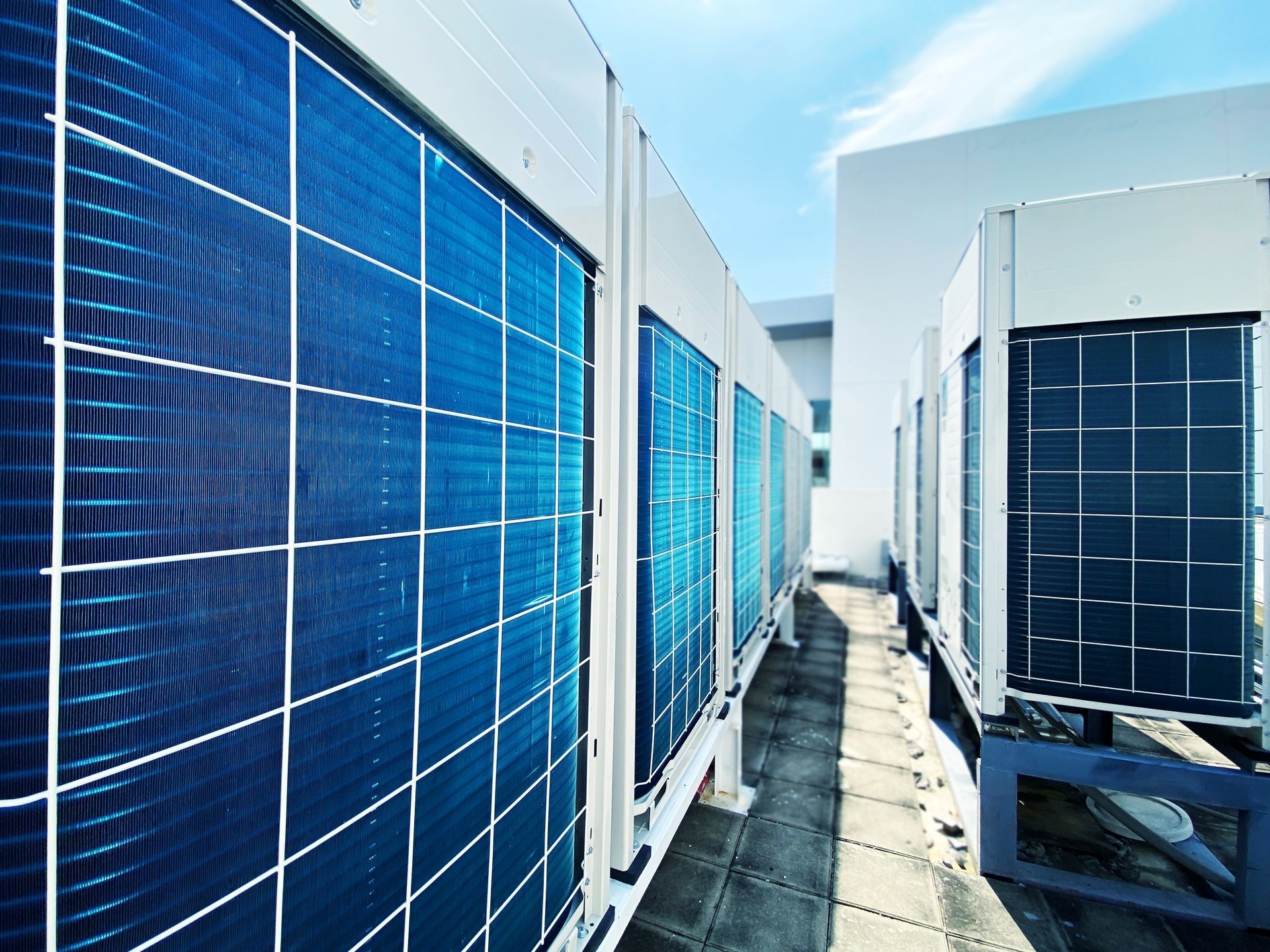Unlocking Efficiency and Comfort: The Ultimate Guide to VRF Installation with Anderson Mechanical KC
Unlocking Efficiency and Comfort: The Ultimate Guide to VRF Installation with Anderson Mechanical KC
In the ever-evolving landscape of heating, ventilation, and air conditioning (HVAC) technology, businesses and homeowners alike are continually seeking solutions that offer superior efficiency, flexibility, and comfort. One such innovation that has been making waves in the HVAC industry is Variable Refrigerant Flow (VRF) systems. Anderson Mechanical KC stands at the forefront of this technological advancement, providing top-notch VRF installation services that promise to transform your indoor climate experience. In this comprehensive guide, we'll delve into the intricacies of VRF systems, explore the benefits of choosing Anderson Mechanical KC for your installation needs, and provide insights into how VRF can elevate your space's comfort and efficiency.
Understanding VRF Systems: The Future of HVAC Technology
Before diving into the specifics of VRF installation, it's essential to understand what a VRF system entails and why it's considered a game-changer in the HVAC industry.
What is a VRF System?
Variable Refrigerant Flow (VRF) systems are advanced HVAC solutions that use refrigerant as the cooling and heating medium. Unlike traditional HVAC systems that rely on a single compressor, VRF systems utilize multiple compressors and can simultaneously heat and cool different areas within a building. This adaptability allows for precise temperature control, catering to the unique needs of each space.
How Does VRF Technology Work?
At the core of VRF systems is the ability to vary the flow of refrigerant to indoor units based on real-time demand. This modulation is achieved through sophisticated inverter-driven compressors that adjust their speed to match the required heating or cooling load. By precisely controlling the refrigerant flow, VRF systems maintain optimal indoor temperatures while maximizing energy efficiency.
Components of a VRF System
A typical VRF system comprises the following components:
- Outdoor Unit: Houses the compressor and other essential components.
- Indoor Units: These can be wall-mounted, ceiling cassette, or ducted units, each serving different areas of the building.
- Refrigerant Piping: Connects the outdoor unit to multiple indoor units.
- Control System: Manages the operation of the entire system, allowing for centralized or individual control of each indoor unit.
The Advantages of VRF Installation
Opting for a VRF system offers numerous benefits that set it apart from conventional HVAC solutions. Here's why VRF installation is a wise investment for both commercial and residential spaces.
1. Superior Energy Efficiency
One of the most compelling advantages of VRF systems is their exceptional energy efficiency. By adjusting the refrigerant flow based on demand, VRF systems eliminate the energy wastage associated with traditional HVAC systems that operate at fixed capacities. This dynamic modulation results in significant energy savings, reducing utility bills and minimizing the environmental footprint.
2. Enhanced Comfort and Precision
VRF systems provide unparalleled control over indoor temperatures. With the ability to heat and cool different zones simultaneously, occupants can enjoy personalized comfort settings tailored to their preferences. This precision ensures consistent and comfortable indoor environments, regardless of external weather conditions.
3. Flexible and Scalable Design
The modular nature of VRF systems makes them highly adaptable to various building sizes and layouts. Whether it's a sprawling commercial complex or a multi-story residential building, VRF systems can be customized to meet specific heating and cooling requirements. Additionally, the scalable design allows for easy expansion, accommodating future growth without extensive modifications.
4. Reduced Installation Space
Compared to traditional HVAC systems that require bulky ductwork and extensive piping, VRF systems are compact and space-efficient. The streamlined installation process minimizes the physical footprint, freeing up valuable space for other essential uses. This is particularly advantageous in buildings where space is at a premium.
5. Quiet Operation
VRF systems operate with minimal noise, thanks to advanced compressor technologies and insulated components. The reduced noise levels enhance the overall comfort of indoor spaces, making them ideal for environments where silence is paramount, such as offices, schools, and healthcare facilities.
6. Environmentally Friendly
By optimizing energy usage and utilizing eco-friendly refrigerants, VRF systems contribute to sustainability efforts. The reduced energy consumption lowers greenhouse gas emissions, aligning with global initiatives to combat climate change and promote environmental stewardship.
Why Choose Anderson Mechanical KC for VRF Installation?
When it comes to installing a VRF system, partnering with a reputable and experienced service provider is crucial to ensure optimal performance and longevity. Anderson Mechanical KC distinguishes itself in the HVAC industry through its commitment to excellence, expertise, and customer-centric approach. Here's why Anderson Mechanical KC should be your preferred choice for VRF installation.
Expertise and Experience
With years of experience in the HVAC sector, Anderson Mechanical KC boasts a team of highly trained professionals adept at handling the complexities of VRF systems. Their in-depth knowledge ensures that every installation is executed with precision, adhering to industry standards and best practices.
Customized Solutions
Recognizing that each building has unique requirements, Anderson Mechanical KC offers tailored VRF solutions designed to meet specific heating and cooling needs. From system design to component selection, their personalized approach guarantees that the installed VRF system aligns perfectly with the client's objectives.
Quality Assurance
Quality is at the heart of Anderson Mechanical KC's operations. They utilize top-of-the-line VRF components from reputable manufacturers, ensuring reliability and durability. Rigorous quality checks are conducted at every stage of the installation process, safeguarding the system's performance and longevity.
Comprehensive Support
Anderson Mechanical KC provides end-to-end support, from initial consultation and system design to installation and ongoing maintenance. Their commitment to customer satisfaction extends beyond installation, offering maintenance services that keep the VRF system running efficiently year-round.
Competitive Pricing
Understanding the importance of cost-effectiveness, Anderson Mechanical KC offers competitive pricing without compromising on quality. Their transparent pricing model ensures that clients receive value for their investment, making VRF installation an affordable and worthwhile endeavor.
Timely Execution
Time is often of the essence in HVAC installations, and Anderson Mechanical KC excels in delivering timely solutions. Their streamlined processes and efficient project management ensure that VRF installations are completed within the stipulated timeframe, minimizing disruptions to the client's operations or daily life.
Positive Customer Reviews
A testament to their excellence, Anderson Mechanical KC boasts a portfolio of satisfied clients who have benefited from their VRF installation services. Positive testimonials highlight their professionalism, technical prowess, and dedication to customer satisfaction, reinforcing their reputation as a trusted HVAC service provider.
The VRF Installation Process with Anderson Mechanical KC
Embarking on a VRF installation project with Anderson Mechanical KC involves several key steps, each meticulously planned and executed to ensure a seamless and successful outcome. Here's an overview of the typical VRF installation process:
1. Initial Consultation and Assessment
The journey begins with an initial consultation where Anderson Mechanical KC's experts assess the client's heating and cooling needs. This involves evaluating the building's layout, existing HVAC infrastructure, and specific requirements to determine the most suitable VRF system configuration.
2. System Design and Planning
Based on the assessment, a customized VRF system design is developed. This includes selecting the appropriate outdoor and indoor units, determining refrigerant piping routes, and planning the control systems. Advanced software tools may be utilized to model the system's performance, ensuring optimal efficiency and coverage.
3. Equipment Selection and Procurement
Anderson Mechanical KC sources high-quality VRF components from reputable manufacturers. This ensures that the system's performance aligns with industry standards and client expectations. Attention is paid to selecting equipment that offers reliability, efficiency, and compatibility with the building's requirements.
4. Installation Preparation
Prior to installation, the team prepares the site by coordinating with the client to schedule the work, securing necessary permits, and ensuring that all components are ready for deployment. This phase may also involve addressing any structural or infrastructural modifications required to accommodate the VRF system.
5. Installation of Outdoor and Indoor Units
The installation process commences with setting up the outdoor units, typically positioned in accessible areas to facilitate maintenance. Indoor units are then installed in designated locations, ensuring optimal airflow and minimal disruption to the building's aesthetics.
6. Refrigerant Piping and Electrical Connections
Precision is paramount in laying out the refrigerant piping, as it forms the backbone of the VRF system. Proper insulation and sealing are essential to prevent leaks and maintain system efficiency. Simultaneously, electrical connections are established to integrate the system with the building's power supply and control mechanisms.
7. System Integration and Testing
Once all components are in place, the VRF system is integrated and thoroughly tested. This involves verifying the functionality of each indoor unit, calibrating temperature controls, and ensuring seamless communication between components. Comprehensive testing guarantees that the system operates at peak performance.
8. Client Training and Handover
Anderson Mechanical KC ensures that clients are well-versed in operating and maintaining their new VRF system. Training sessions cover the use of control interfaces, routine maintenance practices, and troubleshooting procedures. The handover process is conducted with meticulous attention to detail, ensuring that clients are fully equipped to manage their HVAC system.
9. Ongoing Maintenance and Support
Post-installation, Anderson Mechanical KC offers ongoing maintenance services to uphold the system's efficiency and longevity. Regular inspections, cleaning, and prompt repairs are part of their commitment to sustained performance and client satisfaction.
Applications of VRF Systems: Versatility Across Various Sectors
VRF systems are renowned for their versatility, making them suitable for a wide range of applications across different sectors. Here's a glimpse into where VRF installations can make a significant impact:
1. Commercial Buildings
From office complexes and retail spaces to hotels and restaurants, VRF systems cater to the diverse climate control needs of commercial establishments. Their ability to handle multiple zones with varying temperature requirements makes them ideal for businesses seeking both efficiency and flexibility.
2. Residential Properties
Homeowners benefit from VRF systems through personalized comfort settings and energy savings. Whether it's a single-family home or a multi-unit residential building, VRF installations provide quiet, efficient, and reliable heating and cooling solutions.
3. Healthcare Facilities
Hospitals, clinics, and other healthcare facilities demand precise climate control to ensure patient comfort and maintain sterile environments. VRF systems offer the necessary reliability and control, making them a preferred choice in the healthcare sector.
4. Educational Institutions
Schools, colleges, and universities require robust HVAC solutions to accommodate varying occupancy levels and diverse space usages. VRF systems provide the flexibility and efficiency needed to create comfortable learning environments.
5. Industrial Settings
Manufacturing plants and warehouses often have unique HVAC requirements due to their size and operational demands. VRF systems offer scalable solutions that can adapt to the dynamic needs of industrial spaces, ensuring optimal indoor conditions.
Maximizing the Benefits of VRF Systems: Tips and Best Practices
To fully harness the advantages of a VRF system, it's essential to adhere to certain best practices and maintenance tips. Here are some recommendations to ensure your VRF installation continues to deliver optimal performance:
1. Regular Maintenance
Scheduled maintenance is crucial for the longevity and efficiency of your VRF system. Engage Anderson Mechanical KC for routine inspections, cleaning, and component checks to prevent potential issues and maintain system integrity.
2. Optimal System Design
Ensure that the VRF system is designed to match the specific needs of your building. Factors such as insulation, window placement, and occupancy levels should be considered to optimize the system's performance and energy efficiency.
3. Proper Installation
The success of a VRF system hinges on meticulous installation. Partnering with experienced professionals like Anderson Mechanical KC ensures that all components are correctly installed, reducing the risk of future malfunctions and maximizing efficiency.
4. Utilize Advanced Controls
Modern VRF systems come equipped with sophisticated control interfaces that allow for precise temperature management and energy monitoring. Leveraging these controls can enhance system performance and provide valuable insights into energy usage patterns.
5. Address Issues Promptly
Any signs of system irregularities, such as unusual noises, inconsistent temperatures, or error alerts, should be addressed immediately. Prompt attention to these issues can prevent minor problems from escalating into costly repairs.
6. Educate Occupants
Educating the occupants of your building on the proper use of the VRF system can significantly impact its efficiency. Simple practices, such as adjusting thermostat settings appropriately and ensuring vents are not obstructed, contribute to optimal performance.
The Future of HVAC: Embracing VRF Technology
As the demand for energy-efficient and flexible HVAC solutions continues to rise, VRF technology is poised to play a pivotal role in shaping the future of indoor climate control. Innovations in VRF systems, such as enhanced inverter technologies and smarter control interfaces, promise even greater efficiency and ease of use.
Integration with Smart Building Technologies
The integration of VRF systems with smart building technologies is set to revolutionize HVAC management. By leveraging IoT (Internet of Things) devices and advanced analytics, VRF systems can offer predictive maintenance, real-time energy monitoring, and adaptive climate control, further enhancing their efficiency and user-friendliness.
Sustainable Refrigerants
Environmental considerations are driving the adoption of eco-friendly refrigerants in VRF systems. These refrigerants have lower global warming potentials (GWPs), aligning with global efforts to reduce greenhouse gas emissions and combat climate change.
Enhanced Modular Designs
Future VRF systems are expected to feature even more modular and scalable designs, facilitating easier expansions and retrofits. This flexibility will make VRF systems accessible to a broader range of applications, from small residential buildings to large-scale industrial complexes.
Conclusion: Elevate Your Comfort and Efficiency with Anderson Mechanical KC
In the quest for superior indoor climate control, VRF systems stand out as a beacon of efficiency, flexibility, and comfort. Anderson Mechanical KC, with its expertise in VRF installation, offers a pathway to harnessing these benefits, transforming your space into an environment that prioritizes both occupant satisfaction and energy sustainability.
Whether you're managing a commercial establishment seeking to optimize operational costs or a homeowner aiming for personalized comfort, a VRF system installed by Anderson Mechanical KC can be the solution you need. Their commitment to quality, personalized service, and ongoing support ensures that your investment in VRF technology yields long-term rewards.
Embrace the future of HVAC with Anderson Mechanical KC's VRF installation services and experience a harmonious blend of innovation, efficiency, and comfort. Reach out today to explore how a VRF system can revolutionize your indoor environment.
